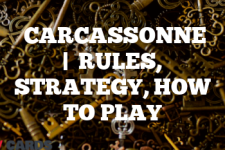Personal Preference: Unleash Winning Strategies & Rules to Play
Introduction
Personal Preference is a fascinating board game that revolves around the concept of individual tastes and preferences. I have found Personal Preference to be a unique blend of strategy, intuition, and a dash of luck alongside a bit of fun if you’re someone with strong opinions like me! The game was first introduced in the late 1980s and has since gained popularity for its engaging gameplay and the intriguing insights it offers into the players’ personalities.

The game requires a Personal Preference board, cards, tokens, and score markers. The cards are divided into four categories: Food & Drink, Activities, People & Places, and Potpourri. Each player’s task is to guess the order of preference of the other players, making it a game of understanding and predicting human behavior.
Quick Tip
One quick tip to win at Personal Preference is to pay close attention to the other players’ reactions and comments. These can provide valuable clues about their preferences, helping you make more accurate predictions.
Rules for playing Personal Preference
- Each player selects a token and places it on the start space of the scoring track.
- The game begins with the first player drawing a card from each category and arranging them in their order of preference.
- The other players then guess this order. Points are awarded based on the accuracy of these guesses.
- The game continues in a clockwise direction. The player with the highest score at the end of the game wins.
While these are the official rules, you can introduce ‘house rules’ to add a twist to the game. For instance, you can include a time limit for guessing or allow players to form alliances.
How to Play Personal Preference
Setup
Each player selects a token and places it on the start space of the scoring track. The cards are shuffled and placed face down in four separate piles according to their categories.
Gameplay
The first player draws a card from each pile and arranges them in their order of preference. The other players then guess this order. Points are awarded based on the accuracy of these guesses.
End of the Game
The game ends when a player reaches the final space of the scoring track. The player with the highest score wins the game.
How to Win at Personal Preference
Winning at Personal Preference requires a blend of strategy, intuition, and a keen understanding of human behavior. Here are some strategies that can help you win:
- Pay close attention to the other players’ reactions and comments. These can provide valuable clues about their preferences.
- Remember the preferences revealed in previous rounds. This information can help you make more accurate predictions in subsequent rounds.
- Try to think from the other players’ perspectives. This can help you understand their preferences better.
Best Strategies for playing Personal Preference game
The best strategies for playing Personal Preference involve a combination of careful observation, strategic guessing, and psychological insight. Here are some strategies that can help you win:
- Observe the other players closely. Look for clues in their reactions, comments, and body language.
- Use your knowledge of the other players’ personalities and tastes to make educated guesses.
- Remember the preferences revealed in previous rounds. This information can be invaluable in making accurate predictions.
Scenarios for Personal Preference
Personal Preference can present a variety of scenarios, each with its own challenges and opportunities. Here are some common scenarios and how you can turn them to your advantage:
- If you’re unsure about a player’s preferences, make a conservative guess. It’s better to score some points than none at all.
- If a player seems to be leading, try to form alliances with other players to guess their preferences accurately and catch up.
- If you’re in the lead, be careful not to reveal too much about your preferences. The other players will be trying to guess your preferences accurately to score points.
Frequently Asked Questions about playing Personal Preference game
- How many players can play Personal Preference? The game can be played by 2 to 4 players.
- How long does a game of Personal Preference typically last? A game typically lasts about 60 minutes.
- Can I play Personal Preference with children? Yes, the game is suitable for players aged 12 and up.
- Can I introduce my own ‘house rules’? Yes, you can introduce your own rules to add a twist to the game.
- What skills does Personal Preference help develop? The game helps develop skills such as strategic thinking, observation, and understanding of human behavior.
External Links
For more information about Personal Preference, visit the official game website here.

A digital native around since the early days of online gaming communities around 2001. An early contributor to the cult gaming site ClanTemplates, Adam has spent years giving free gaming resources to the community. With BoardCards, Adam is most experienced and commonly writing the articles on Strategy multi-player games like Settlers of Catan and Avalon. His first introduction to board games was via Mancala, an Egyptian-origin stone game and one of the oldest known games still played worldwide. Contact me via email



